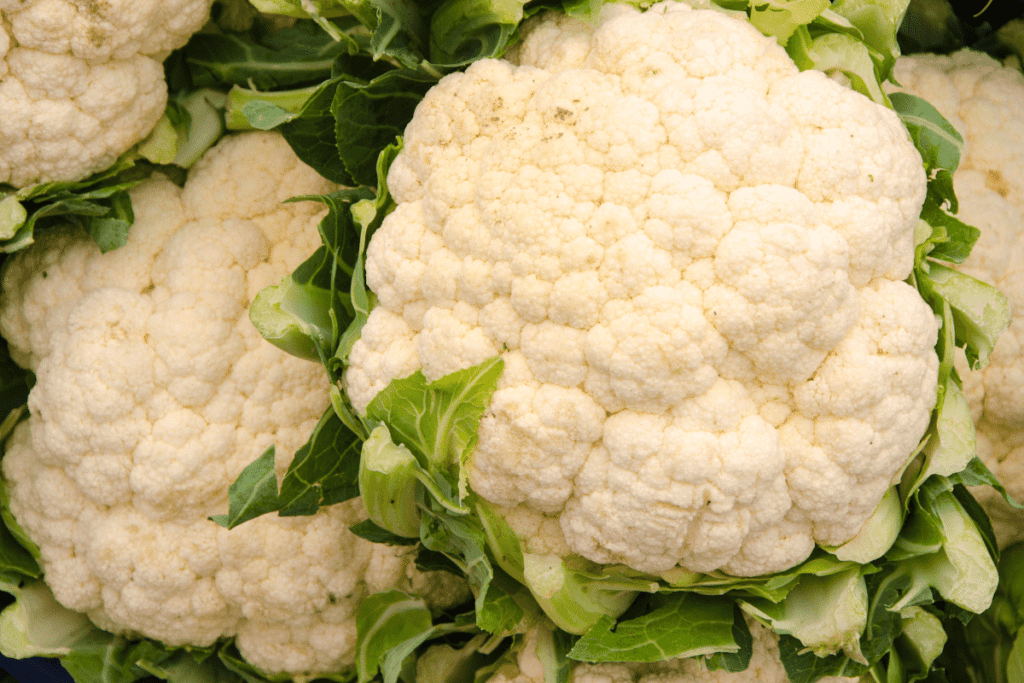Are you trying to figure out which vegetables are high in lysine vs arginine? If so, you’re in the right place! I had the same question, spent hours sorting through a ton of nutritional data, and found the answer.
Listed below are the top ten vegetables with the most lysine vs arginine. I’m also including 5 bonus vegetables that didn’t quite make the top ten, but still have an excellent lysine to arginine ratio. If you’re trying to avoid a herpes virus-related outbreak through your diet, this is need-to-know info!
(Yes, this info is for HSV1, HSV2, Shingles, EBV/Epstein-Barr and other viruses in the herpes family.)
Why am I listing vegetables with the highest lysine to arginine ratio? Why don’t I just list which vegetables have the highest amount of lysine overall? Why does the ratio with arginine matter?
Because if you have a herpes-related virus like the ones mentioned above, and you’re trying to prevent yourself from having an outbreak, then it doesn’t matter if a food has a high amount of lysine, if it has MORE arginine, then it can cause an outbreak.
Why? Because lysine and arginine have an antagonistic relationship and compete for absorption in your body. More lysine? No outbreak! More arginine? Outbreak city!
If the food/your meal has a little more arginine than lysine, you might be okay, but if it has a lot more arginine than lysine, it can definitely cause an outbreak. Why? Because arginine feeds the herpes virus and causes it to multiply rapidly.
I learned this the hard way through multiple, ongoing, super painful, aggravating, frustrating, confusing, exhausting, emotional roller coaster rides in the herpes amusement park! Ok ok, it was NOT amusing lol. But I like to make light of it. A smile and a little humor goes a long way with healing imho. : )
By the way, if you want scientific data on the relationship between lysine and arginine, here is an article on PubMed you can check out with more info: Relation of arginine-lysine antagonism to herpes simplex growth in tissue culture.
Ok, here’s your list of herpes-friendly veggies! We can eat as much of these vegetables as we like without risking an outbreak.
Each veggie listed has at least a lysine to arginine ratio of 1.4 to 1 (with the highest being 2.5 to 1!), so that means you can even eat these veggies totally by themselves and not have to worry about balancing out the arginine ratio with another high lysine food. These veggies are good to go all by themselves!
In a hurry? Scroll down for a chart that sums up the stats on all 10 of our high lysine, low arginine vegetables! (Plus your 5 bonus veggies, as promised!)
Top 10 Vegetables with the Most Lysine vs Arginine
#1 Cauliflower
Not only is cauliflower a fantastic substitute for rice, it has the best lysine to arginine ratio of all vegetables. I would like to formally crown her the Vegetable Queen of Lysine! 👑
1 cup of raw, chopped cauliflower (107g) has 232mg of lysine and 92mg of arginine.
Total lysine to arginine ratio: 2.5 to 1!
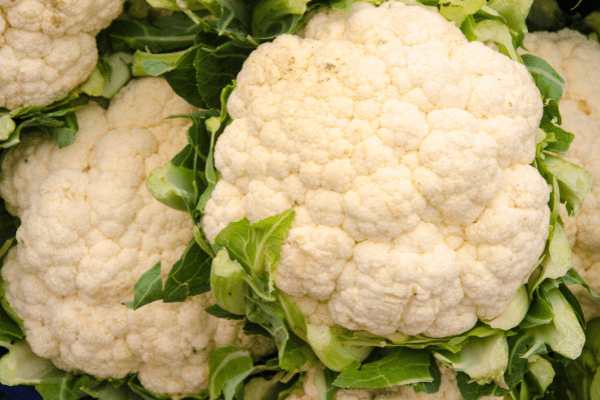
#2 Corn
The specific ratio varies depending on how it’s prepared, but both white and yellow corn, regardless of raw or cooked, are herpes virus-friendly! I’m listing the highest lysine version here and in the chart below.
1 cup of canned, whole kernel sweet corn (164g) has 358mg of lysine and 159mg of arginine.
Total lysine to arginine ratio: 2.3 to 1
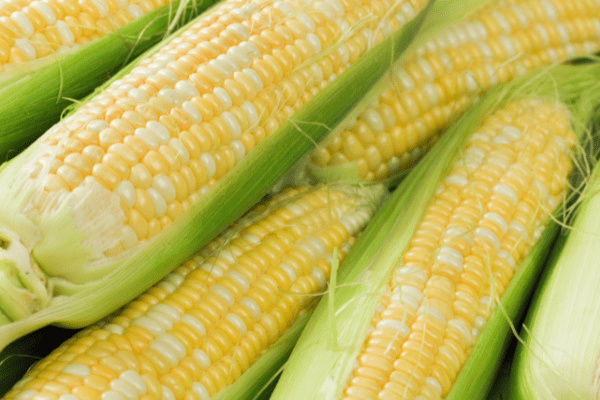
Important Note: Unlike raw and cooked whole kernel corn, corn flour and corn meal have twice as much arginine than lysine. I’m not sure exactly why (maybe because of the production process?) but it is clearly indicated in the USDA FoodData Central database. So just keep those separate in your mind!
#3 Mushrooms, Cremini + Others!
See the note right below this for full details, but cremini mushrooms (also known as brown mushrooms, Italian mushrooms, or Baby Bella mushrooms) all have an excellent lysine to arginine ratio. So feel free to eat these yummy fungi to your heart’s content!
1 cup of raw cremini mushrooms (87g) has 219mg of lysine and 107mg of arginine.
Total lysine to arginine ratio: 2 to 1
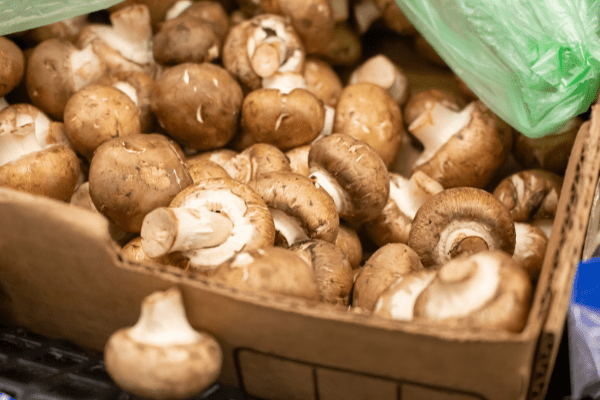
Did you know that white button mushrooms, cremini mushrooms, Baby Bella mushrooms, and Portobello mushrooms are all the same exact variety that’s been harvested at different ages? They are, and they all have an excellent amount of lysine vs arginine! I’m listing the one with the highest lysine content, but regardless of when they were harvested (and hence “named” for commercial marketing purposes) they all have a lysine to arginine ratio of at least 1.4 to 1.
#4 Tomatoes
Not only can this bright red veggie supply us with a powerful punch of the antioxidant lycopene, but it can also help keep our skin outbreak-free and silky smooth as its own!
1 cup of red, ripe, canned, stewed tomatoes (255g) has 89mg of lysine and 56mg of arginine.
Total lysine to arginine ratio: 1.6 to 1
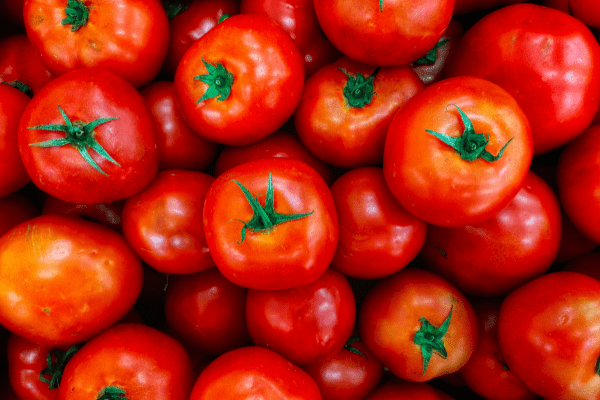
According to the USDA FoodData Central, no matter how tomatoes are prepared, including canned, sun-dried, cooked, raw, etc., they all have a lysine to arginine ratio of at least 1.2 to 1. I listed the version of tomatoes with the highest lysine content above and in the chart below to keep things simple for you. This herpes stuff is confusing enough!
#5 Snow Peas
Important! Please note this listing is for SNOW PEAS only. They are also sometimes called “Chinese Peas” because of their use in Chinese dishes served in the West like stir fry. What we consider traditional green peas actually have more arginine than lysine so keep that in mind!
1 cup of boiled snow peas (160g) has 376mg of lysine and 251mg of arginine.
Total lysine to arginine ratio: 1.5 to 1
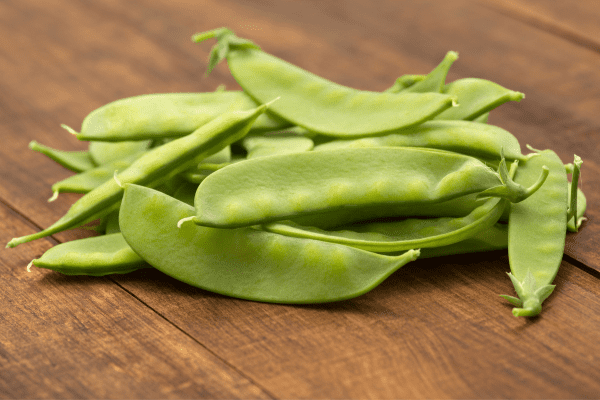
#6 Green Peppers
Coming in at #6, green peppers are yet another high lysine, low arginine veggie to add to your diet if you haven’t already! (Read the note below for more details.)
1 cup of raw, chopped sweet green peppers (149g) has 58mg of lysine and 40mg of arginine.
Total lysine to arginine ratio: 1.5 to 1
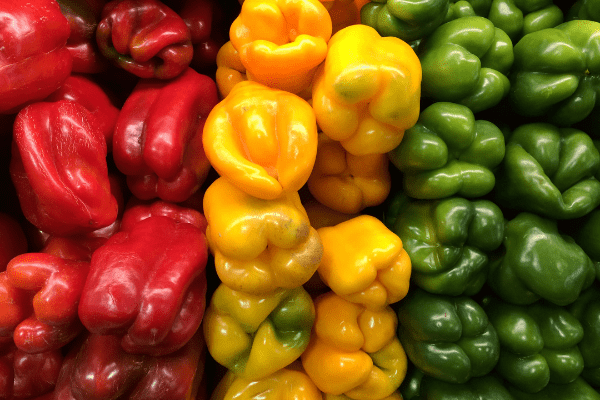
A note about green/yellow/red peppers: There are multiple listings for green, red, and yellow peppers in the USDA FoodData Central database, including raw, boiled, sauteed, canned, you name it! For some reason, a few versions were listed as having a tiny bit more arginine than lysine.
For example, 1 cup of sweet, red, canned peppers (with solids and liquids – 140g) cut in halves, has 50mg of lysine and 53mg of arginine. So we’re talking as little as a 3mg difference.
I personally think it’s safe to say that all sweet peppers, regardless of whether they are green, yellow, or red (it’s the same pepper, harvested at different ages) and regardless of how they’re prepared, do not have enough of a difference in the ratio to trigger an outbreak. However, I wanted to mention that here to be totally transparent, so you have the full scope of information and can decide for yourself! : )
#7 Turnips
If you’re looking to cut carbs, this root veggie is a great substitute for mashed potatoes AND has a fantastic lysine to arginine ratio to help keep the outbreak monster away! (Eating it cooked or raw will give you the same great ratio!)
1 cup of cubed, boiled turnips (156g) has 44mg of lysine and 30mg of arginine.
Total lysine to arginine ratio: 1.5 to 1
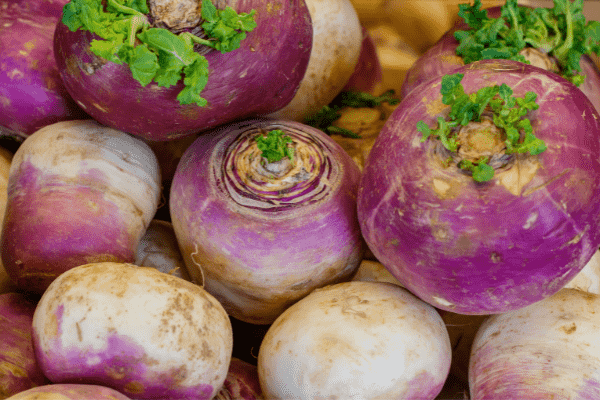
#8 Lettuce, Iceberg + Others!
Iceberg lettuce has the highest lysine to arginine ratio, so I’m choosing that one as the one to list, but other varieties of lettuce have at ratios of least 1.1 to 1, so they are great too! That includes romaine, green leaf, red leaf, and butterhead lettuce. Crisp, yummy and good for the tummy too!
1 cup of shredded iceberg lettuce (72g) has 17mg of lysine and 11mg of arginine.
Total lysine to arginine ratio: 1.5 to 1
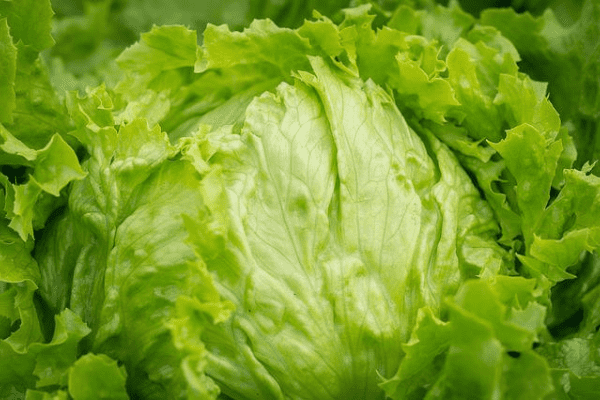
#9 Beets
Whether you eat them raw in salads, juiced, canned or cooked, beets are lysine beasts! No matter how you prepare them, beets have a fantastic lysine to arginine ratio of 1.4 to 1 so you can feel free to beeeeeeet it, beeet it, beeeeeet it, beeet it, no one wants to be defeated! Oh sorry, major MJ moment there. :))
1 cup of raw beets (136g) has 79mg of lysine and 57mg of arginine.
Total lysine to arginine ratio: 1.4 to 1
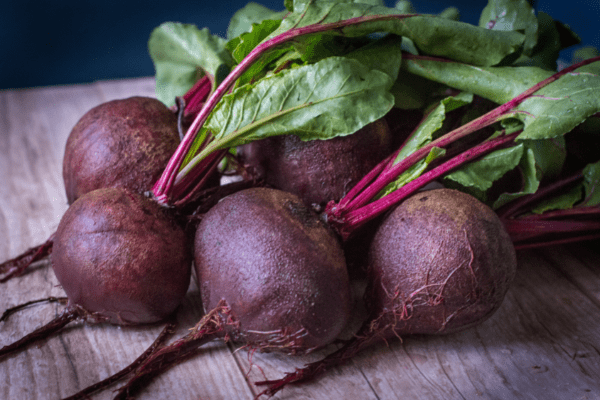
#10 Celery
Recently made popular by Anthony William in his advocacy for juicing it, celery is known for supporting digestion, reducing inflammation, and being rich in vitamins and minerals. Now we know it’s also herpes virus-friendly, so enjoy as much as you’d like!
1 cup of raw, chopped celery (101g) has 27mg of lysine and 20mg of arginine.
Total lysine to arginine ratio: 1.4 to 1
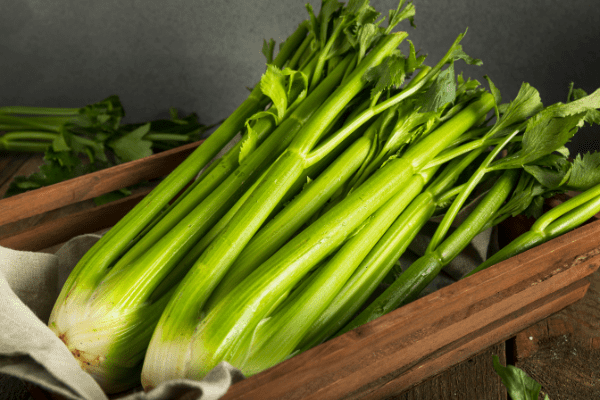
Special Mentions for High Lysine Low Arginine Veggies
Avocados! Technically they are a fruit, so I couldn’t include them in the list above. However, most people don’t think about avocados as fruit; they tend to be thought of as vegetables.
Avocados have an excellent lysine to arginine ratio of 1.5 to 1 so I had to mention them here for you!
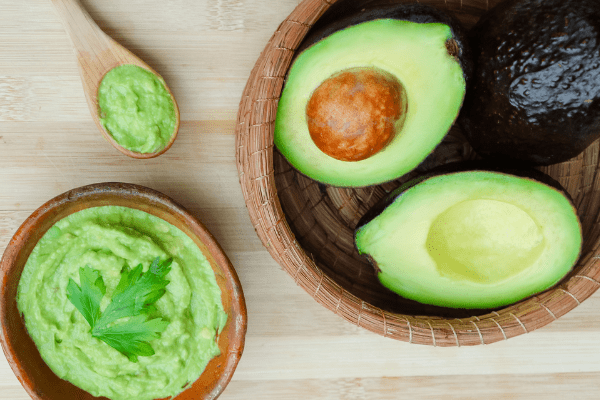
Here’s their full lysine-arginine breakdown:
1 cup of cubed avocado (150g) has 198mg of lysine and 132mg of arginine. If avocados were vegetables, that would put them below snow peas and above green peppers on our list, making them #6!
In addition to avocados, I also wanted to mention that calabash and bamboo shoots would have made the list, but I chose to omit them because for most of my readers, they are less common than the other foods listed.
Aaaaand, to be honest, as someone who has personally spent many, many hours of her precious time over the years researching nutritional info and recipes (not just for herpes-related stuff, but in general) – it drives me completely bonkies when an article lists something that isn’t readily available or just plain hard for some people to find.
That’s why I try to keep all of my blog posts super relevant and realistic. I want you to be able to take real action on the info I share, so that it makes a genuine difference for you in the quality of your life. I got off that outbreak roller coaster and I want to make sure you do too!
So, final note – calabash has a lysine to arginine ratio of 1.5 to 1 and canned, drained bamboo shoots have a lysine to arginine ratio of 1.4 to 1. So if either of those are available for you, feel free to enjoy them as much as you want without worrying about causing an outbreak! : )
Top 10 Vegetables with the Most Lysine vs Arginine:
Quick View Chart
>>> Swipe left or rotate if you’re on mobile! <<<
| Position | Vegetable | Weight (g) | Measure | Lysine (mg) Per Measure | Arginine (mg) Per Measure | Ratio of Lysine to Arginine |
| #1 | Cauliflower | 107 | 1 cup chopped (1/2″ pieces) | 232 | 92 | 2.5 to 1 |
| #2 | *Corn, Sweet, White | 164 | 1 cup | 358 | 159 | 2.3 to 1 |
| #3 | Mushrooms, Cremini | 87 | 1 cup | 219 | 107 | 2 to 1 |
| #4 | Tomatoes, red, ripe, canned, stewed | 255 | 1 cup | 89 | 56 | 1.6 to 1 |
| #5 | Snow Peas, (edible-podded), boiled | 160 | 1 cup | 376 | 251 | 1.5 to 1 |
| #6 | Peppers, sweet, green, raw | 149 | 1 cup, chopped | 58 | 40 | 1.5 to 1 |
| #7 | Turnips, raw (Cooked = same ratio!) | 130 | 1 cup, cubes | 47 | 31 | 1.5 to 1 |
| #8 | Lettuce, Iceberg | 72 | 1 cup, shredded | 17 | 11 | 1.5 to 1 |
| #9 | Beets, raw | 136 | 1 cup | 79 | 57 | 1.4 to 1 |
| #10 | Celery, raw | 101 | 1 cup, chopped | 27 | 20 | 1.4 to 1 |
5 Bonus High Lysine Low Arginine Vegetables
Here you go! As promised, here are 5 additional high lysine, low arginine vegetables that I couldn’t leave out because they are fairly common and easy to include in your herpes diet. You might already be eating some or all of them!
If so, now you can continue to eat them with full peace of mind that not only are they safe to eat, but they’re actually helping to keep your outbreaks at bay. Hooray!
- Potatoes
- Summer Squash
- Zucchini
- Broccoli Raab (a.k.a. Rapini – as my grandparents called it!)
- Sweet Potatoes
Source for this data: All data for this article, including in the table shown, was taken from the USDA FoodData Central database.
If you’d like to know the lysine-arginine content for the bonus veggies I mentioned (or any other food for that matter!), you can search individually for them on the FoodData website at the link above, or you can grab a copy of my Lysine vs Arginine Food Ratio Charts below!
The Lysine vs Arginine Food Ratio Charts
This is a 60+ page quick reference guide I put together to help people just like you and me who are focusing on preventing herpes virus-related outbreaks through our diets.
The data is formatted in a way that makes it easy for you to see not only the lysine and arginine content of each food, but more importantly, its ratio of lysine to arginine.

Save yourself hours of time. I did the hard work so you don’t have to! This clear, concise quick reference guide contains all the info you need and nothing you don’t.
Keep your life simple with this go-to reference guide and never again worry about doing multiple searches over and over, then sorting through unnecessary info to find out what you really want to know…
HOW MUCH LYSINE VS ARGININE DOES THIS FOOD HAVE? All of that info is now condensed and right at your fingertips at a moment’s access.
The foods in each chart have been sorted with the highest (best) lysine to arginine ratio at the top, and the lowest at the bottom. This way, it’s easy for you to know which foods are safe and which to be careful with.
Here’s a sample image of one of the pages inside to give you an idea of what you’ll be getting. (There are 9 pages for fruits alone!)
Sample Page: Lysine to Arginine Ratio of Fruits
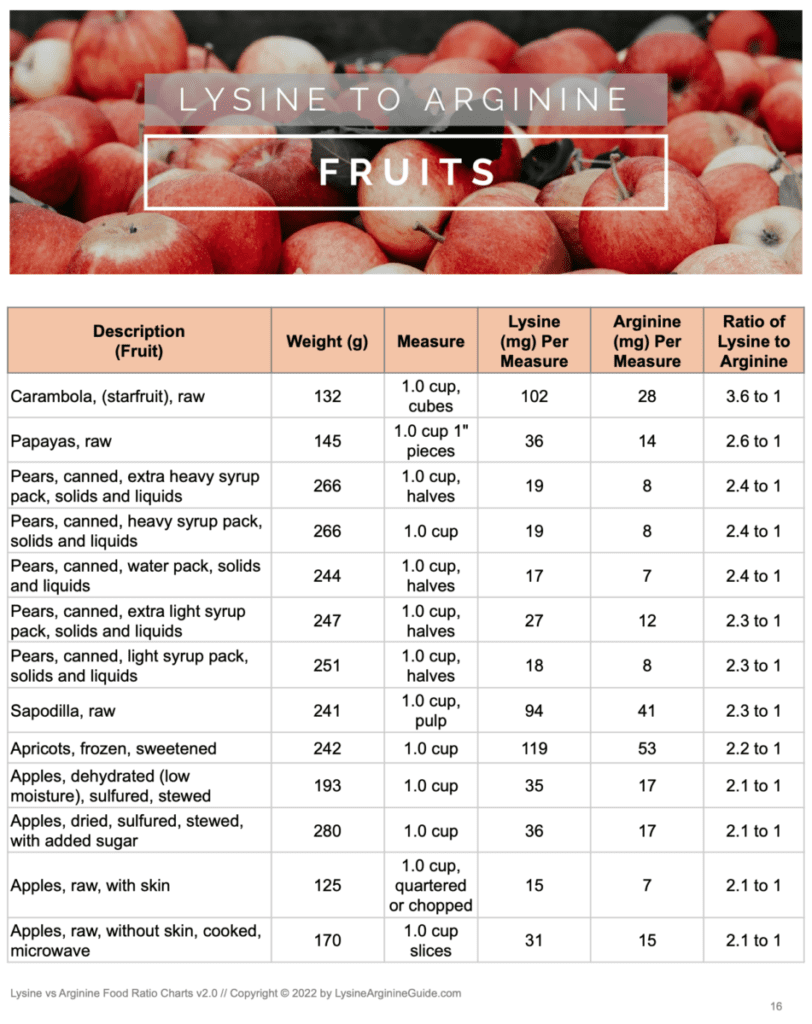
To be clear, the Lysine to Arginine Quick Reference Guide contains specially designed Lysine to Arginine Food Ratio Charts. The charts don’t contain any of the other nutritional data such as protein, carbohydrates, etc.
It only contains the vital info you need to decide the following:
- Whether you can consume a certain food by itself (for the foods with more lysine than arginine)
- Whether you need to combine that food with a high lysine food to balance it out (for those that have slightly more arginine than lysine)
- Whether you might be better off avoiding that food entirely (for the foods that are super high in arginine compared to lysine. I call these the outbreak party starters lol.)
It was specially designed for people just like you and me, who are trying to consume high lysine, low arginine foods in order to prevent herpes virus-related outbreaks.
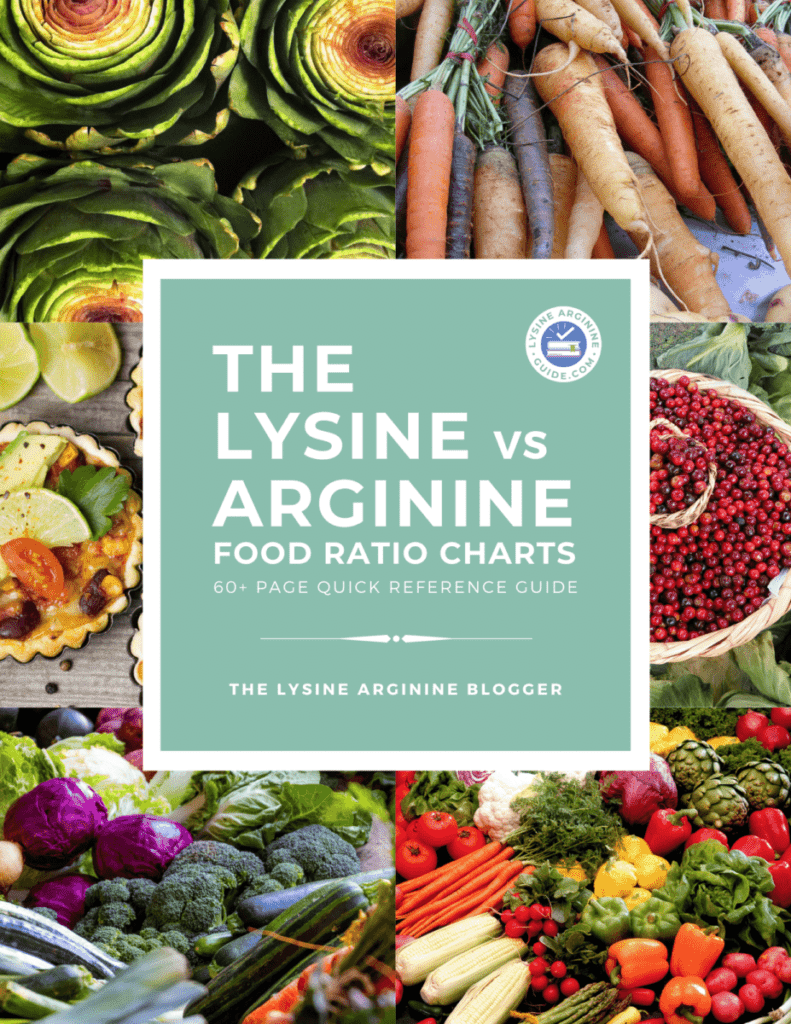
Get your copy today and use it for the rest of your life! Easy peasy! 🙂


I’m just a regular person who learned the hard way that too much arginine causes herpes outbreaks. I found real solutions that have worked for me to prevent outbreaks for years. My mission is to share everything I’ve learned with as many people as possible, to prevent them from going through the same pain and suffering I did. Because once you know what to do, you won’t have to suffer anymore!

